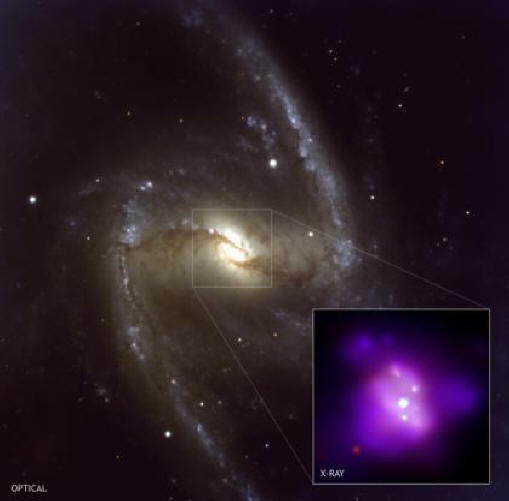Vampire Astronomy
May 28, 2009
A complex
central network of filamentary
structure spirals down to the center
of the galaxy. Astronomers say it
provides new insights into
super-massive black holes. It is
more likely that it demonstrates
electrical effects.
If
John
Wheeler hadn’t invented
black holes,
Bram Stoker
would have had to. These vampires of
deep space suck the mass out of any
star or hydrogen cloud that wanders
within their reach, and the x-ray
shrieks of their dying victims
transmit gravitational dread across
the cosmos. High-tech telescopes can
image the mangled
remains
of the corpses and plot the decaying
energies
of their final electromagnetic
wails. They have bewitched both the
popular and the scientific
imaginations. But these are not
creatures of natural physics; they
are supernatural monsters that have
been created from dividing by zero.
In November of 1915, Karl
Schwarzschild worked out a solution
to Einstein’s gravitational
equations. A year later, David
Hilbert worked out a similar
solution, which has since been
called the Schwarzschild solution,
but he made a couple of errors. His
solution “differs in the range of
values allowed for the incorrectly
assumed radius variable…that enabled
the black hole to be obtained. The
variable…is in fact not a radius at
all, being instead a real-valued
parameter by which the true
radii…are rightly
calculated.”
Several mathematicians pointed out
these errors in the ensuing years,
but their objections were ignored
and their work was buried in
neglect. Work on the Hilbert
solution culminated in the unnatural
object that, in the 1960s, John
Wheeler branded a black hole.
In recent years,
Stephen J.
Crothers, a kind of
“black hole slayer” from Australia,
has published
papers
that disinter Hilbert’s errors. The
standard “Schwarzschild’s solution”
is usually given as:

The standard interpretation is that
r
is the distance from the center of
the gravitating mass,
m.
With sufficient mass that is
sufficiently compacted, the
gravitational force will be stronger
than all forces that oppose it, and
the mass will become infinite as
r
goes to zero—a black hole. But this
entails dividing by zero, a
forbidden move. Schwarzschild’s
actual
solution was:


R is the distance from the center of
the gravitational field and r is a
parameter of the curvature of the
space. In Euclidian space, R=r. But
the space of General Relativity—and
of black holes—is non-Euclidian. In Schwarzschild’s actual solution, as
r goes to zero, R—the actual
distance variable—goes to α, a
non-zero number. There can be no
point mass and therefore no black
hole. Black holes, like vampires,
are purely figments of imagination.
So what are astronomers looking at
when they
see black
holes? They observe an
explosion of energy where there
isn’t enough gravity to generate it.
Because they are ignorant about
plasma phenomena, they can’t imagine
anything but gravity that might
produce such energy. Electricity,
which
could
generate such energy, is taboo, and
so they must resort to the sorcery
of division by zero.
By Mel Acheson
|







